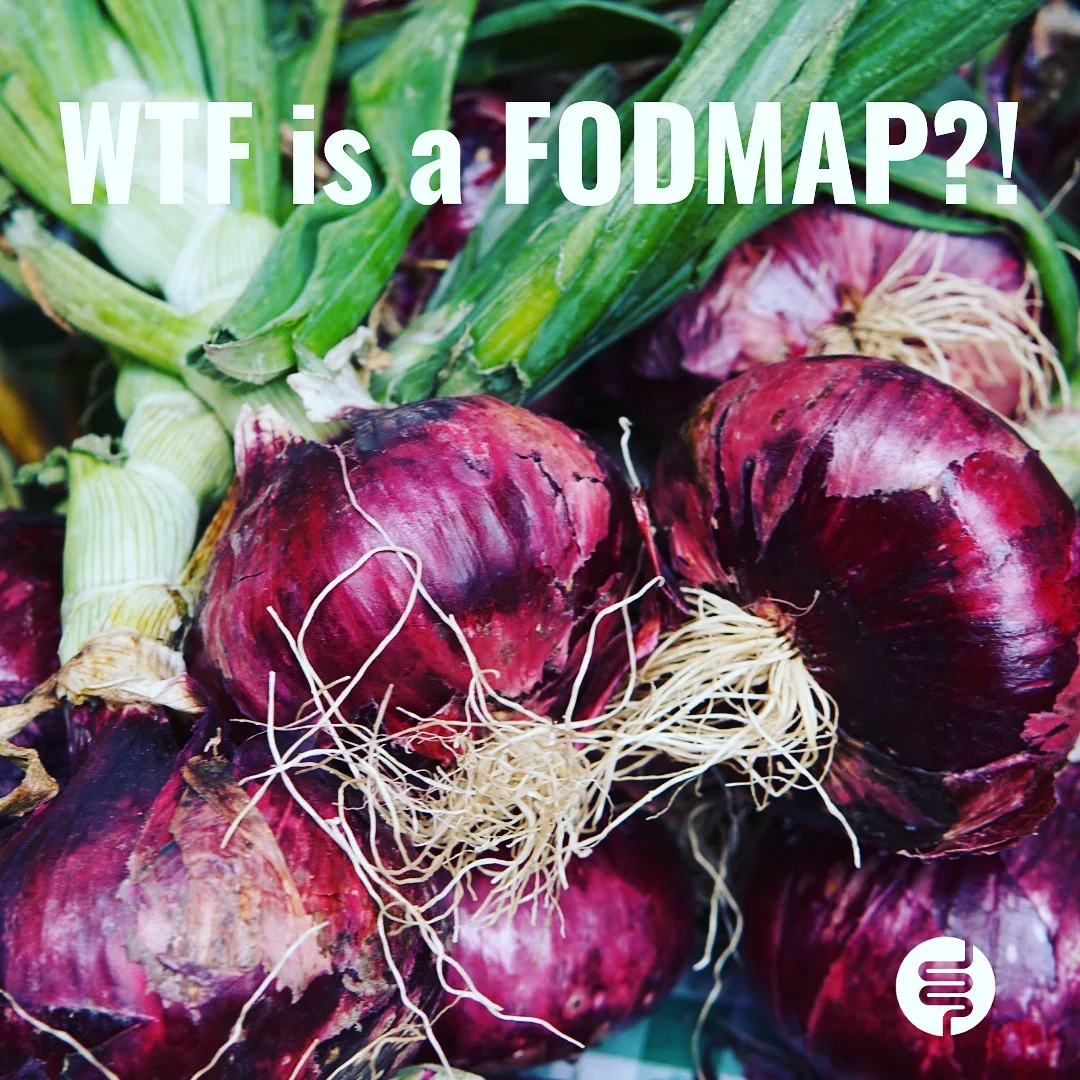WTF is a FODMAP?!
FODMAP is an acronym for “Fermentable Oligosaccharides, Disaccharides, and Monosaccharides and Polyols”, which are a group of highly fermentable short- and medium-chain carbohydrates (typically high in fructose or lactose) and sugar alcohols. These carbs are inefficiently stored in the small intestine (even by extremely healthy people), and the bacteria in your gut love them.⠀⠀⠀⠀⠀⠀⠀⠀⠀
When too many fermentable sugars enter the large intestine, they feed the bacteria causing excess gas and potentially bacterial overgrowth (in extreme cases, like yours truly🙋🏻♀️). This can lead to FODMAP intolerance, meaning your body is less able to digest these types of carbs, which can lead to a variety of digestive symptoms like bloating, gas, cramps, diarrhea, constipation, indigestion, and excessive belching.
Digestive enzymes are needed to break down these molecules and when the body is lacking them, these sugars enter the large intestine unabsorbed, causing magnified symptoms and bacterial overgrowth.
Over time, FODMAP intolerance can lead to bacterial overgrowth in the small intestine, causing SIBO (small intestine bacterial overgrowth). It is also potentially caused by a leaky or damaged gut, lack of stomach acid, or a strain on the organs that produce enzymes to break down carbs (amylase from the pancreas) and/or fat (bile from the liver and gallbladder). When you have SIBO, eating FODMAPs can exacerbate symptoms, perpetuate overgrowth, lead to leaky gut and make the intolerance worse.
Some examples of high FODMAP foods include: garlic, onions, cauliflower, apples, pears, most grains, most legumes, avocado, peaches, asparagus, artichokes, and soft cheese.
Adopting a low FODMAP diet is really helpful in addressing your symptoms if you suspect FODMAP intolerance. There are so many resources to help you make the best decision for your body. What may work for one person may not work for another, and reintroducing foods can sometimes take a while. In my personal experience, once I removed FODMAPs from my diet, 95% of my symptoms went away. Now, if I eat something with FODMAPs, I know I’ll probably have some digestive distress the next morning, and I can be totally prepared for it. I have yet to reintroduce most foods (I’m working on sauerkraut this week) but I’m hopeful that one day I’ll get to eat onions and garlic in their whole form again.
There is a positive here: FODMAP intolerance will most likely disappear for most people as their guts heal and their gut microflora levels normalize!!! If you have any questions or think you might be FODMAP intolerant (or perhaps have some other digestive issues going on), feel free to reach out here.


